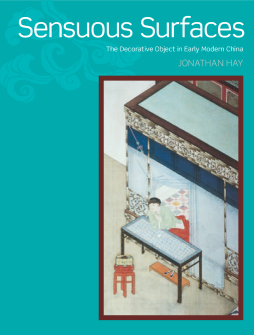
Additional Information
Book Details
Abstract
With Sensuous Surfaces, Jonathan Hay offers one of the most richly illustrated and in-depth introductions to the decorative arts of Ming and Qing dynasty China to date. Examining an immense number of works, he explores the materials and techniques, as well as the effects of patronage and taste, that together have formed a loose system of informal rules that define the decorative arts in early modern China.
Hay demonstrates how this system—by engaging the actual and metaphorical potential of surface—guided the production and use of decorative arts from the late sixteenth century through the middle of the nineteenth, a period of explosive growth. He shows how the understanding of decorative arts made a fundamental contribution to the sensory education of China’s early modern urban population. Enriching his study with 280 color plates, he ultimately offers an elegant meditation, not only on Ming and Qing art but on the importance of the erotic in the form and function of decorations of all eras.
“In addition to communicating Hay’s own pleasure in his subject, the book itself is also a pleasure to behold with a well-designed layout and many excellent illustrations. Decoration is a fascinating subject which resonates far beyond any particular period or country.”
— ARLIS“A very intelligent book, and each of the author’s main points is fleshed out in complex detail. Hay is to be commended for restoring the decorative arts to a central place within the theoretical discourse of art history.”
— Orientations“Jonathan Hay’s Sensuous Surfaces, focusing on portable interior decorative objects of the Ming and Qing periods, circa 1570–1840, examines the fascinating yet little-explored sensuous surfaces of what the Qing taste-maker Li Yu called wanhao zhi wu or ‘pleasurable things.’"— Oxford Art Journal
Jonathan Hay is Ailsa Mellon Bruce Professor of Fine Arts at the Institute of Fine Arts, New York University, He has written widely on the visual and material culture of Ming-Qing China, including Shitao: Painting and Modernity in Early Qing China (2001).
